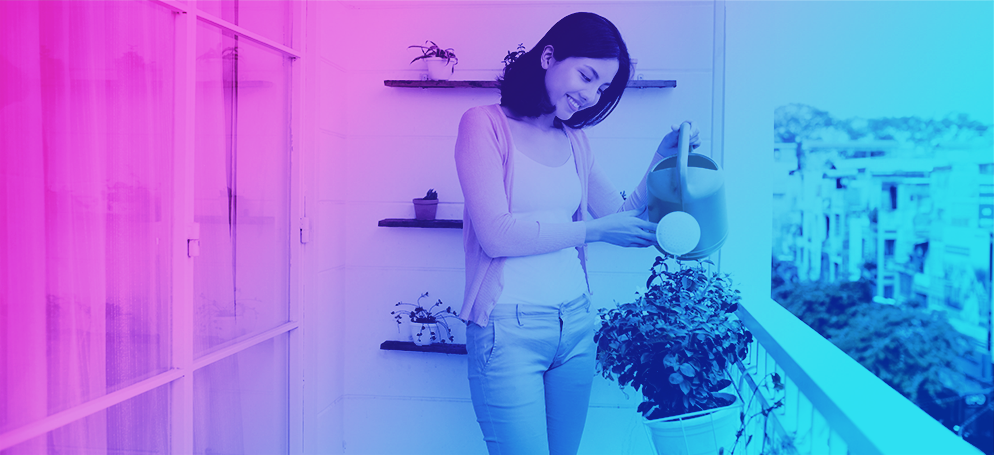
Planning for 2021: Part 1 – Changes in consumer behaviour
In the first part of our ‘Planning for 2021’ blog series, we focus on how consumer behaviour has changed post-Covid and what this means when planning your marketing budget for next year.
Consumer behaviour is in a state of flux
Some Covid-related consumer behaviour changes have played out in predictable ways such as delays of big purchases, long-haul getaways re-planned as staycations and at-home entertainment purchases during lockdown. However, consumer behaviour is in a state of flux as we learn more about the virus, governments update their policies and people’s evaluation of risk evolves.
Consumers are still worried about the virus
The coronavirus pandemic remains a top global concern in most countries. However, concern has been declining over recent months, Ipsos found in their What Worries the World report. This is aided by social proof – e.g. as people start venturing into shops, cafes and restaurants, others will see them and feel more confident to do so. However, this can also go in the opposite direction, if cases start increasing again (as they have recently in the US, India, Mexico, Brazil and Iran). As of late June, 85% of Americans are concerned about a second wave, which will inevitably dampen consumer confidence in the coming weeks.
However, attitudes are complex and polarised
In the initial days of the global pandemic, there was a huge sense of unity as people grappled with the enormity of the crisis. Most people wanted to save lives, do their bit, stay at home and support front-line workers who were (and still are) risking their lives to save others. However, as time passed and summer arrived, and as the economic consequences of lockdowns started to dominate the headlines, a great divide presented itself.
Across a sample of 20 markets, Global Web Index data from late May shows how two camps emerge. Some respondents plan to come back into shops (51%), large outdoor venues (28%) and large indoor venues (26%) as they open, whilst the rest are not sure or want to skip doing this for some time.
Digging into demographics does not show significant differences in attitudes, except for age. The younger someone is, the more they plan to go into shops or venues, which makes sense for two reasons:
- Risk from coronavirus increases with age
- Young people tend to rely more on shopping and entertainment as part of their lifestyle.
This presents a challenge for retailers targeting older demographics as their footfall will take longer to recover and could be harder to translate into ecommerce revenue. However, it is vital to do this as efficiently as possible.
Winners and losers
Much has been written about the categories which are seeing decreased and increased demand as a result of the pandemic. Anything that assists working, housekeeping, entertainment and food preparation at home has seen great growth, whereas holidays, hospitality and automobiles are in decline. There have even been a few surprising categories to benefit.
What’s interesting for marketers is how coronavirus has changed purchase drivers. For example:
- Cancellation policies are now topping the list of considerations when planning trips or holidays, cited by more people than “booking with a brand I trust” (17% vs 16%)
- Hygiene factors have also become paramount, with 68% of people quoting “regular cleaning” as an important factor to consider before visiting a public venue
Source: Global Web Index
New audience segments
The pandemic has created new audience segments and some of these may endure. For example:
A renewed interest in arts, crafts, gardening and baking
Hobbycraft, the UK’s biggest arts and crafts retailer, reported that the number of people visiting the ideas page of its website has tripled during lockdown. The extra time at home and a yearning for simpler, comforting, hands-on pursuits in the face of all the bad news saw an increase in activities like gardening, growing fruit and vegetables, and home baking.
Older people are increasingly online
Around 10% of the world’s population is over 65, but in developed markets the number is far higher. Roughly 1 in 7 Americans, 1 in 5 Germans and 1 in 4 Japanese people are aged 65+ and that number is growing fast. The pandemic has helped to accelerate this audience’s reliance on digital channels. A large proportion of older consumers have significant disposable income so are a lucrative segment for brands.
More than half of UK over 65s now shop online. In Japan, the number of 60 to 90 year olds using the Rakuma marketplace app has increased thirtyfold in just 3 years.
Online grocery shopping
As consumers sought to avoid stores or at least minimise visits during lockdown, rates of online grocery shopping have soared around the world:
- In Italy, at the height of its lockdown, supermarket chain Carrefour said online customers had doubled to 110,000. Sales via its partnership with logistics start-up Glovo increased more than 10-fold
- In France, online orders for home delivery rose 32% YoY in early March, while click-and-collect orders rose 29%
- In the US, online grocery sales increased as much as 5-fold
(Read Oban’s article on the future of online grocery shopping here.)
Video conferencing
In April, Zoom reported 300 million daily meeting participants, up from 10 million daily in December 2019 – a thirtyfold increase in just four months.
Increased working from home has accelerated demand for cloud-based solutions that enable a more seamless homeworking experience, along with any technology which makes it easier for homeworkers to collaborate via online meetings, team messaging, video, and voice.
The crisis has accelerated demand for sustainability
Sustainability demands have been accelerated as a result of coronavirus. 42% of people consider it “a lot more important” for brands to behave in sustainable ways (plus 32% consider it “a little more important”). The balance between hygiene and sustainability is a difficult one to strike as consumers want to feel safe but they also want to behave in ways that prepare us for climate change challenges in the years to come.
Summary
- Consumer behaviour is in a state of flux because of the pandemic
- Most of the public was unified at the start of the crisis but attitudes on how we move forward have polarised
- The virus has changed purchase drivers – e.g. a flight to safety has changed how consumers think and behave
- The crisis has created new audience segments, some of which may endure, so marketers should take account of these when planning ahead
- The crisis has increased consumer awareness of sustainability – something for brands to consider in their operations and messaging
If you’re planning your marketing budgets for next year and would like to know how to capitalise on international opportunities in a post-Covid environment, please get in touch.
Next week, Part Two of our ‘Planning for 2021’ series will focus on changes in competitor sets as a result of the pandemic – stay tuned.

Sarah Jennings | CEO
Oban International is the digital marketing agency specialising in international expansion. Our LIME (Local In-Market Expert) Network provides up to date cultural input and insights from over 80 markets around the world, helping clients realise the best marketing opportunities and avoid the costliest mistakes.